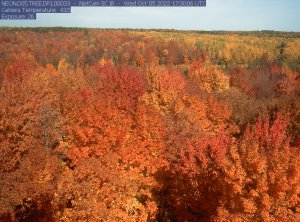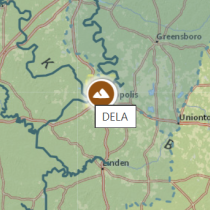NEON Sites Show Their Colors: Fall Across the Observatory
November 22, 2023
Fall arrives at different times and in different ways across the Observatory. Thanks to the phenocams across the NEON field sites, here's a glimpse at how autumn is unrolling across the continent and how 2023 looks compared to 2022.
Fall Phenology: North to South and East to West
In the context of plant phenology, "fall" (or autumn) is defined by specific biological events and changes observed in plants as they respond to the decreasing daylight and cooling temperatures typical of this time of year in the northern hemisphere. In habitats with deciduous trees, the most noticeable and dramatic sign of fall is the changing color pallet, as green leaves turn vibrant shades of red, orange, yellow, and eventually brown. Other phenological signs of autumn include leaf drop (for deciduous plants), fruit ripening or seed dispersal for some species, changes in growth patterns, and the onset of dormancy for many trees and plants. The timing of these events is closely tied to latitude and geography. In North America, fall generally starts first in the northern latitudes due to the cooler temperatures and greater variation in daylight length. The timing of color change and other phenological events is also tied to elevation, regional weather patterns, and other variables.
Northeast (D01)
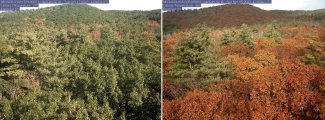
Fall color change at HARV (Domain 01) in 2023. Oct 17 - Nov 5.
Mid-Atlantic (D02)
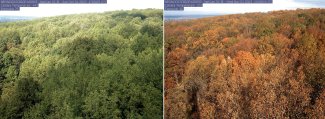
Fall color change at SCBI (Domain 02) in 2023. Oct 1 - Nov 1.
Ozarks Complex (D08)

Fall color change at DELA (Domain 08) in 2023. Oct 1 - Nov 6.
Pacific Northwest (D16)
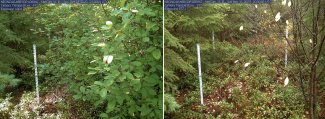
Fall color change at ABBY (Domain 16) in 2023. Oct 1 - Nov 11.
Pacific Southwest (D17)
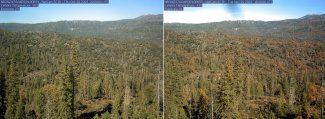
Fall color change at SOAP (Domain 17) in 2023. Oct 19 - Nov 21.
Taiga (D19)
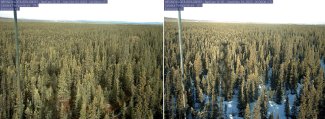
Fall color change at DEJU (Domain 19) in 2023. Oct 1 - Nov 1. The photos are shown at the same time of day one month apart, with the Arctic polar night approaching and daylight much less at the same time of day in November.
Fall from Year to Year
The variation in fall phenology from year to year is significantly influenced by weather patterns. These variations can alter the timing and intensity of typical autumnal events like leaf color change, fruit ripening, and the onset of dormancy in plants. In 2023, scorching heat and drought in some areas, and too much rain in others, meant many regions expected a less colorful leaf display. In the Northeast, it also seemed that peak color came a little bit later in the season.
Mid-Atlantic (D02)
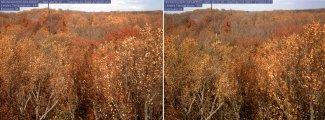
Peak fall color comparison at SERC (Domain 02), 2022 vs. 2023. Both photos taken Nov 1.
Great Lakes (D05)
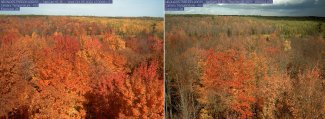
Peak fall color comparison at TREE (Domain 05), 2022 vs. 2023. Both photos taken Oct 5.
Northeast (D01)
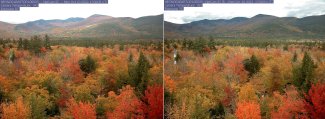
Peak fall color comparison at BART (Domain 01), 2022 vs. 2023. First photo taken Oct 10, 2022; second photo taken Oct 18, 2023. It appears peak color came a full week later in 2023.
Want More Fall Phenology?
Check out our phenocam images to see what's happening at every NEON field site. The latest image for each site is shown on this page. Past images are housed by the PhenoCam Network and available in the NEON Data Portal.
